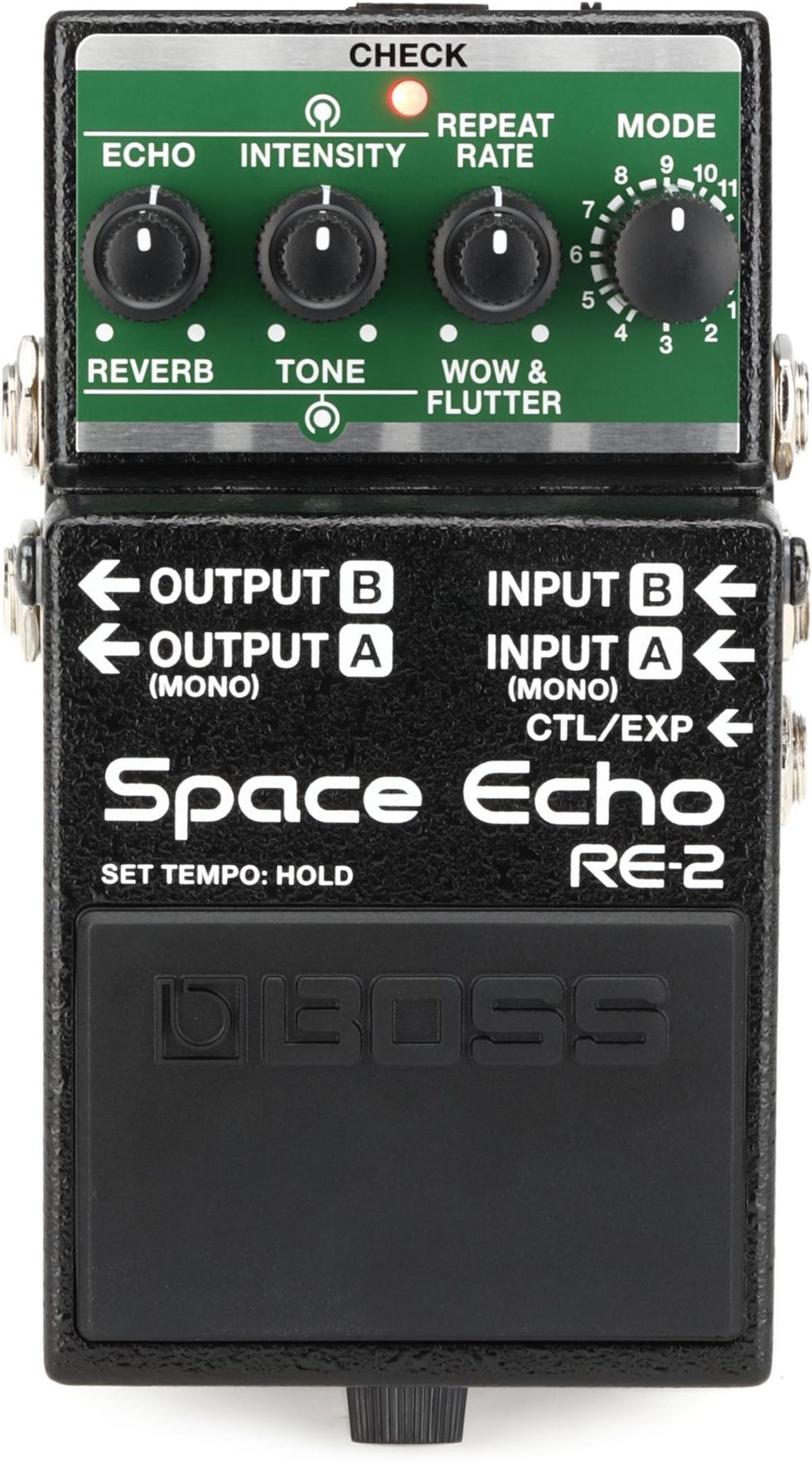As good as digital emulations are today, there’s not much engineers can do to approximate the tactile experience of interacting with vintage hardware. Few devices illustrate this divide quite as effectively as tape echoes. Take it from a masochist who knows—tape echoes are intrinsically infuriating machinery. They break often, sometimes spectacularly, always expensively, and generally at the most inconvenient possible time. Think of your most-disloyal-ever significant other: Chances are, your fave tape echo will beat them hands-down for unreliability.
The problem, as any experienced tape-echo user knows, is that these lumbering analog hulks are instruments in their own right—with functionality and feel that that can become foundational parts of a playing style not easily replicated in the digital domain. This is especially true for the original Roland RE-201 Space Echo. It invites on-the-fly tweaks ranging from playful polyrhythms to time-smearing, oscillating mayhem. Its capacity to double as a mix-stage instrument in the studio also makes it extra-invaluable to many player/recordists. And it’s pretty hard to replicate the intuitive, hands-on experience of working with its well-spaced knobs and their unique taper, layout, and sensitivity.
Boss’ RE-2 ambitiously attempts to distill the RE-201 experience into a compact digital format. But unlike the RE-20 pedal or the new RE-202, which utilize larger, more full-featured layouts that approximate some interactive thrills of the RE-201, the RE-2 fits all that functionality into a standard-sized Boss enclosure. Inevitably, that requires a hidden function or two—like the digital preamp and twist functions, and the assignment of (optional) expression pedal functions. But what Boss accomplished here in terms of delivering a Space Echo vibe in a pedal for space-conscious players is impressive. And in practice, it’s a fun and inspiring unit.
Seriously Stuffed!
One great thing about any Boss pedal is the seared-in-the-prefrontal-cortex familiarity of the form. It enables you to approach any compact Boss pedal with a lot more confidence. That sense of assuredness comes in handy with the RE-2 because there are a fair number of controls to manage. Packing that many control options into such a small space is not an enviable task. But Boss, to their credit, made the essentials—reverb, echo volume, intensity (repeats), tone, repeat rate, and a wow and flutter control—easily accessible via clever concentric knobs. The critical 11-position mode knob is vague and hard to read in low light, though. So, you’ll probably want to keep a printed copy of the head-combination matrix handy—or just navigate the multi-head sounds by feel.
Space constraints mean that some classic Space Echo features are hidden or consolidated into simpler controls. The very flexible bass and treble controls on an original (and the RE-20 and RE-202) become a single, if effective, tone control here. And the instrument-volume preamp control is a fixed analog preamp emulation option that, nonetheless, adds a discernible element of warm saturation.
Putting Heads Together
Much of the Space Echo’s allure is down to the painterly way you interact with it. And despite the RE-2’s size, you can still get pretty creative on the fly. With the pedal’s three virtual heads, it’s easy to create complex rhythmic textures that don’t collapse into a chaotic, odd-metered, miasmatic mess. The tap-tempo function adds a measure of additional control. It’s fun exploring these compound echoes, even if they lack some of the hiccup-y, polyrhythmic potential of virtual tape echoes with more playback “heads.”
Some players ignore the original RE-201’s spring reverb. But for this reviewer, it’s an essential part of the Space Echo sound that I love using on its own. It’s represented on the RE-2 by a nice spring emulation that complements the echoes in seamless fashion. Although it doesn’t have quite the character of the RE-201’s spring, it still sounds cool by itself.
The Verdict
Fitting all the functionality and feel of a Space Echo in a compact Boss Pedal is impossible. But if you drop the comparisons to the RE-201, the RE-2 is an engaging, flexible, and very practical delay with a lot of personality. Delay-soaked settings sound beautiful, rich, and immersive. Even players that have never touched an original Space Echo will still find a lot of expressive potential and utility here. The fact that the RE-2 makes so much of the Space Echo’s essence accessible in a small pedal is no small victory. I suspect that even a lot of jaded Space Echo purists with an interest in downsizing will find reason to celebrate.
Boss RE-2 Space Echo Delay and Reverb Effects Pedal
The world-famous RE-201 Space Echo effect makes its return in compact-pedal form with the BOSS RE-2 Space Echo! Offering authentic multi-head tape echo effects with expanded delay times, the beloved spring reverb sound, and a ton of control over effects parameters, the RE-2 Space Echo sounds amazing with guitars and keyboards, as well as drum machines. An external footswitch/expression pedal input gives you creative hands-free control options, and the true stereo signal path is perfect for multi-amp rigs and studio mixing applications.

















